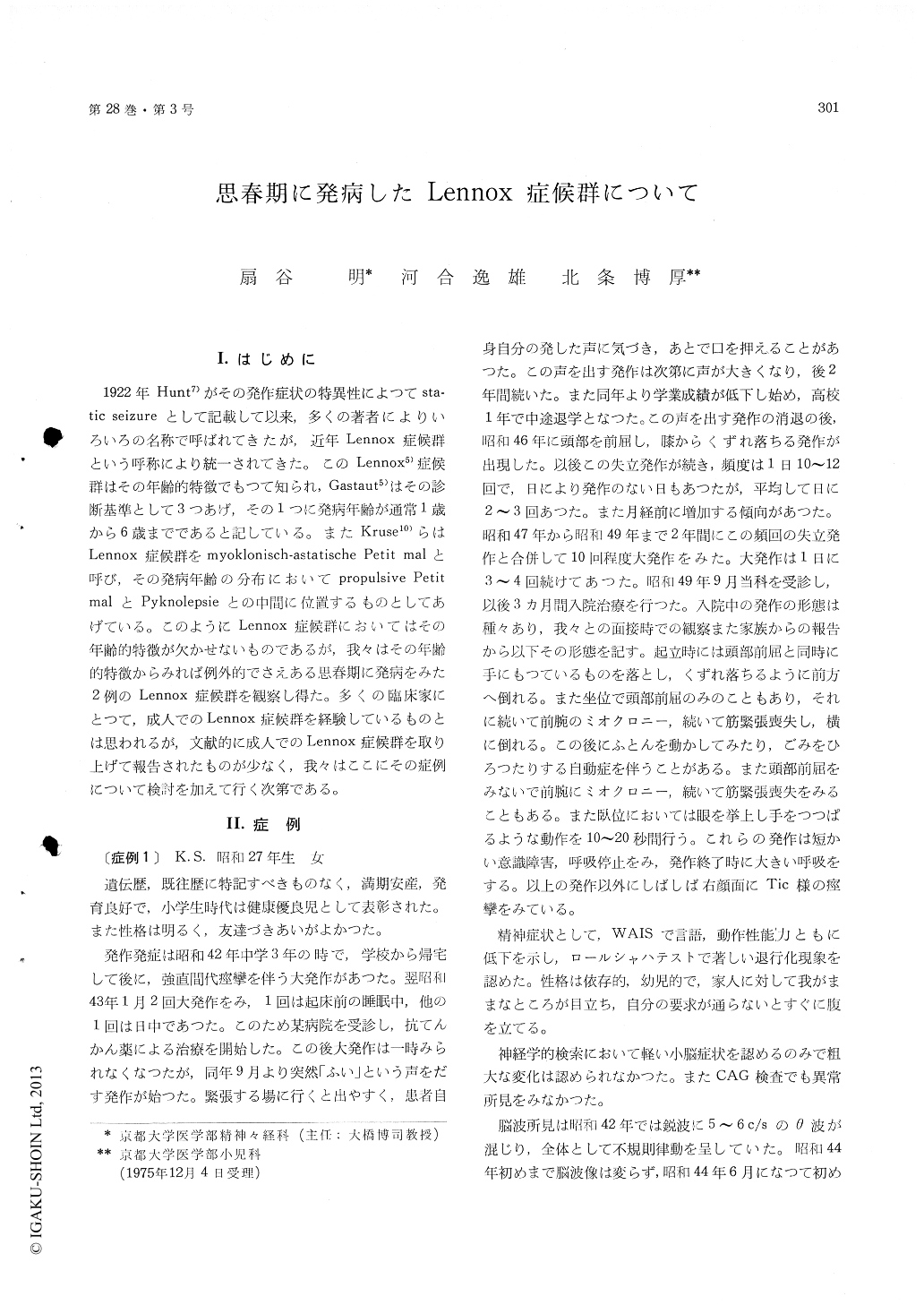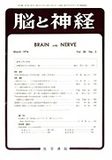Japanese
English
- 有料閲覧
- Abstract 文献概要
- 1ページ目 Look Inside
I.はじめに
1922年Hunt7)がその発作症状の特異性によつてsta—tic seizureとして記載して以来,多くの著者によりいろいろの名称で呼ばれてきたが,近年Lennox症候群という呼称により統一されてきた。このLennox5)症候群はその年齢的特徴でもつて知られ,Gastaut5)はその診断基準として3つあげ,その1つに発病年齢が通常1歳から6歳までであると記している。またKruse10)らはLennox症候群をmyoklonisch-astatische Petit malと呼び,その発病年齢の分布においてpropulsive PetitmalとPyknolepsieとの中間に位置するものとしてあげている。このようにLennox症候群においてはその年齢的特徴が欠かせないものであるが,我々はその年齢的特徴からみれば例外的でさえある思春期に発病をみた2例のLennox症候群を観察し得た。多くの臨床家にとつて,成人でのLennox症候群を経験しているものとは思われるが,文献的に成人でのLennox症候群を取り上げて報告されたものが少なく,我々はここにその症例について検討を加えて行く次第である。
2 cases of the Lennox syndrome which began at the age between 14 and 16, namely in puberty, were reported. The Lennox syndrome which has the onset in puberty is against its general definition. For instance, Gastaut (1966) defines the onset of the Lennox syndrome in general as the age bet-ween 1 and 6, but he also reported he experienced exceptionally some cases of the Lennox syndrome which appeared after age 10. We think, it is generally well known for clinicians that there are some cases of the late onset, but few have reported about that. And so we here investigated and re-ported these cases.
The first case, 22 year old female was attackedas the first symptom with grand mal seizure at age 15, and one year later showed 'Juchzer' (ref. Doose), and after the disappearance of two years continued 'Juchzer' , the astatic-myoclonic seizures appeared. The second case, 20 year old female was attacked with grand mal seizure at age 14, and soon after showed the astatic-myoclonic seizures. Regarding the progress of seizure's form, both are closely related with grand mal seizures. On etiology we consider that the first is probably idiopathy, and the second is the residual state of arsenic-toxing which is due to milk containing arsenic in infancy. In the first the intelligence developed normally till the onset of the Lennox syndrome, but after that it became disturbed, and in the second it was already low before the onset, and undoubtedly it further lowered after that. At present both have intel-lectual disturbance of moderate degree, but they show no abnormal findings in neurological investi-gation. On the other hand, as for intelligence we differ from Gastaut who reported that in cases with late onset the mental repercussions are less pro-nounced and sometimes even absent. Also we did not observe the severe organic cerebral disturbance pointed out by Otawara (1970).
On EEG both of them at first showed diffuse high voltage slow waves, and in several years after the appearance of Lennox-syndrome we found slow spike-waves.
On therapy, scarcely no benefical effects were noted by conventional anti-epileptica, and by nitrazepam only the temporal benefical effect was obtained. As to the prognosis we take a pessimistic view at the present stage.

Copyright © 1976, Igaku-Shoin Ltd. All rights reserved.


